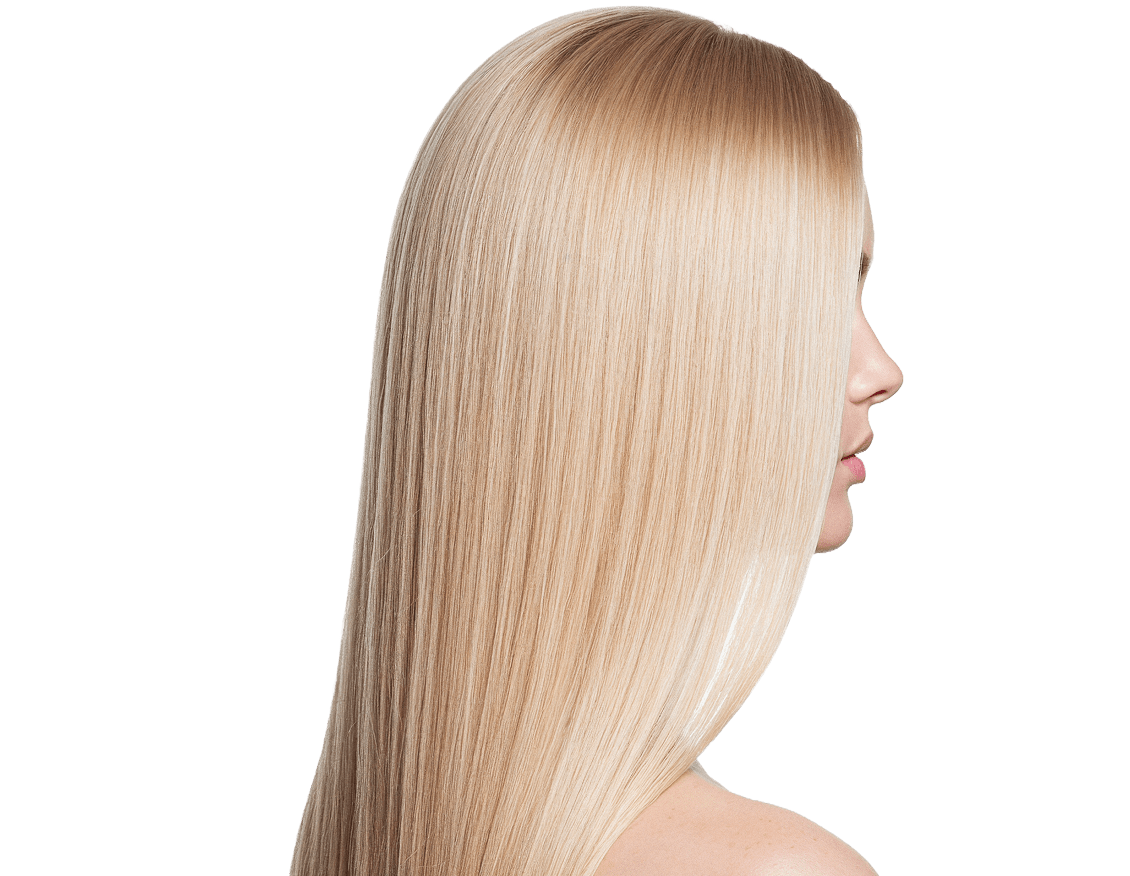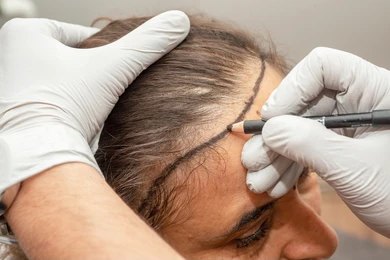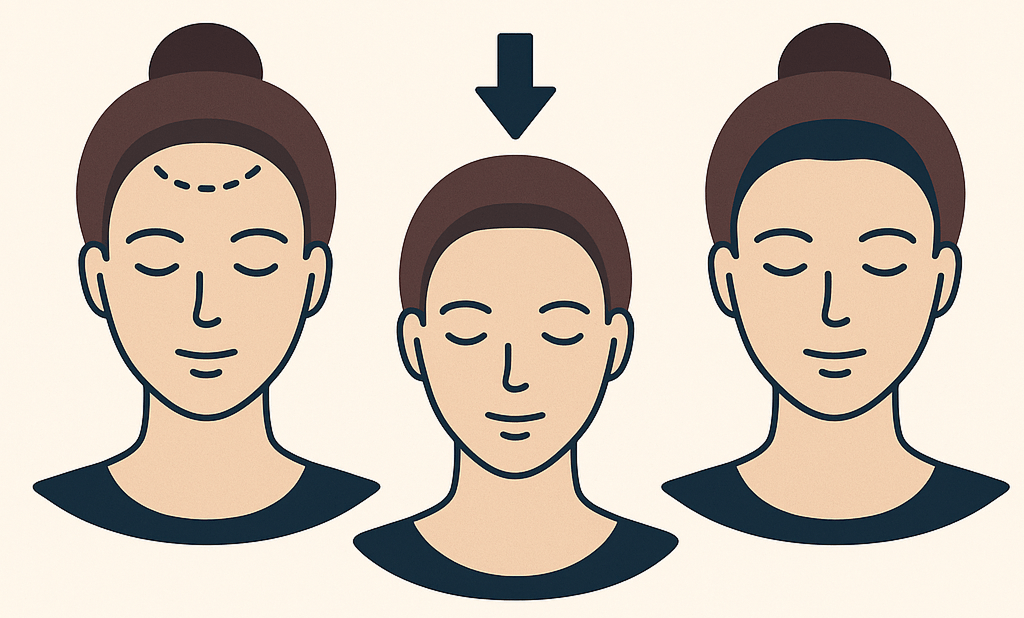Forehead Reduction Hair Transplant

Forehead Reduction Hair Transplant: All You Need to Know
What is a Forehead Reduction Hair Transplant?
Also known as Hairline Lowering Transplant for Women
A Forehead Reduction Hair Transplant is a specialised form of female hairline hair transplant focused on lowering the hairline to create a smaller, more proportionate forehead. It’s an ideal solution for women with a naturally high or M-shaped hairline, or for those who have experienced frontal hairline thinning due to genetics, hormonal changes, or aging.
Unlike surgical foreheadplasty, which involves removing skin, this procedure uses modern hair transplant techniques like FUE (Follicular Unit Extraction) or DHI (Direct Hair Implantation) to create a new, natural-looking hairline just above the forehead. The goal is to reduce the visible height of the forehead without invasive surgery or scarring.
Often referred to as hairline lowering for women, it delivers long-term, natural results and can be customised to suit individual face shape, age, and hair characteristics.
Cost of Forehead Reduction Hair Transplant in the UK
In the UK, Forehead Reduction Hair Transplant typically costs between £3,500 to £7,000, depending on the number of grafts required and the complexity of the hairline design. Some clinics offer fixed-price packages, while others may provide personalised quotes based on the patient’s needs.
Prices may increase if the procedure is combined with PRP therapy, temple restoration, or eyebrow transplants for more comprehensive results.

Benefits of Forehead Reduction Hair Transplant
A high forehead or receded frontal hairline can create the appearance of aging or imbalance in facial structure. A Forehead Reduction Hair Transplant can address these concerns non-surgically. Here’s what patients can expect:
- Improved facial proportions by reducing forehead height
- Long-term results without the need for repeat treatments like Botox
- A more youthful look, as smaller foreheads are often associated with a younger appearance
- Increased hairline density when combined with a transplant
- Boost in self-esteem, especially for patients who frequently cover their foreheads with hair or hats
How the Procedure Works
This procedure is performed using either FUE or DHI, both of which are minimally invasive:
Consultation & Hairline Design – A new lower hairline is marked according to your facial structure.
Local Anaesthesia – The scalp is numbed, eliminating discomfort during the procedure.
Graft Extraction – Hair follicles are harvested from the donor area (typically the back/sides of the head).
Site Creation – Small micro-incisions are made along the new hairline.
Graft Placement – Each follicle is implanted precisely to ensure natural density and direction.
Most patients require 1,800 to 2,500 grafts for optimal coverage and fullness. The result is a natural hairline that blends seamlessly with existing hair.

How Long Does Forehead Reduction Hair Transplant Take?
Forehead Reduction Hair Transplant — often used by women to lower a high hairline — is typically carried out using either the FUE (Follicular Unit Extraction) or DHI (Direct Hair Implantation) technique. The procedure usually takes 4 to 8 hours, depending on the number of grafts required and the complexity of the hairline design. Both FUE and DHI are minimally invasive outpatient treatments, meaning you can go home the same day.
Does It Leave a Scar?
No — unlike traditional surgical forehead reduction, Forehead Reduction Hair Transplants using FUE or DHI techniques do not leave visible scarring. In FUE, hair follicles are extracted individually using a micro-punch tool, while in DHI, the follicles are implanted directly using Choi implanter pens — both methods result in tiny dot-sized incisions that heal naturally. There are no stitches or linear scars, and most patients only experience mild redness, swelling, or scabbing, which usually clears within a week. Your surgeon will provide full aftercare guidance to ensure optimal healing and long-term results.


Hair Transplant Aftercare Pack
Every Dr Ditta Hair Transplants patient is given an aftercare pack. This pack contains everything you need for a swift recovery and successful hair transplant growth. Follow the instructions and use the products as directed to give your hair transplant the best chance of success.
We also include:
- Video Instructions
- Spray bottle for spraying head with saline solution
- Medication
- Shampoo for washing
Hairline lowering treatment vs hairline transplant
Discover the differences between hairline transplants and forehead reduction hair transplant: in this comparison table:
| Hairline Transplant | Forehead Reduction Hair Transplant: | |
|---|---|---|
| Suitability | Recommended if you’re happy with your natural hairline, but want to address hairline recession or hair thinning | Recommended if you want to change your natural hairline |
| Eligibility | Most people with female or male pattern baldness are eligible | May not be eligible if you have male or female pattern hair loss (or a family history of this type of pattern balding) |
| Hairline movement | Hairline movement is much smaller (500–2,000 grafts) as transplantation is more commonly used to straighten or fill thinning hairlines | Hairline moves 2.1cm on average. It can be moved up to 5.5cm, which is the equivalent of transplanting 8,000 to 10,000 grafts |
| Anaesthetic | Local | General or, more rarely, local |
| Procedure time | 4–8 hours | 1–3 hours |
| Time to see results | 6–18 months | Immediate |
| Costs | £4,820 on average | Up to £8,000, excluding brow lift and/or hair transplant |
| Scarring and side effects | Small scar formation at the back of the head with FUT; FUE (Follicular Unit Extraction) leaves no visible scars. | Visible scarring is possible, but may be hidden by the hairline. May also cause decreased hair density (thinning hair), especially along the hairline. |
Why Choose Dr. M Ditta?
At Dr. Ditta Hair Transplants, we specialise in advanced surgical techniques designed to create natural results and restore your confidence.
With 5+ years of consistent, high-quality results, we’ve earned the trust of our patients. Whether you’re considering your first transplant or looking to repair a previous transplant, Dr. Ditta and his team are here to provide expert care whenever you need it.
Qualified surgeon, quality patient care
- Personalised Patient Care: At Dr. Ditta Hair Transplants, we focus on individual needs, offering honest guidance from your first enquiry to full recovery.
- Expert-Led Treatment: All procedures are performed by Dr. Ditta (GMC No. 7084372), a skilled surgeon with thousands of successful FUE transplants to his name.
- Experienced Support Team: Dr. Ditta’s technicians are highly trained—alongside Dr Ditta, they have performed 1000’s of procedures.
- Natural, Confident Results: We’re proud to deliver natural-looking outcomes that help restore not just your hair, but your confidence too.
Forehead Reduction Hair Transplant: FAQs
Forehead reduction hair transplant: involves techniques designed to lower a high hairline or reduce the appearance of a large forehead. This may include non-surgical methods, hair transplants, or minor surgical procedures depending on your individual needs.
This treatment is not suitable for everyone — especially those with active hair loss or limited scalp flexibility. If you’re considering your options, these frequently asked questions can help guide you:
How long does forehead reduction hair transplant: take?
The duration varies depending on the method used. Non-surgical treatments (like laser therapy or camouflage techniques) may take under an hour, while more advanced hairline advancement procedures typically take 2–3 hours.
Are the results permanent?
For surgical or hair transplant-based treatments, the results are usually long-lasting to permanent. Non-surgical options may offer temporary improvements that require ongoing maintenance.
Will there be visible scarring?
Minimally invasive or non-surgical methods leave little to no scarring. In hairline advancement or transplant procedures, the scar is often well hidden within the hairline and fades over time.
Who is the ideal candidate for forehead reduction hair transplant:?
You may be a good candidate if you have:
A naturally high hairline or broad forehead
Healthy hair growth in the frontal scalp area
Sufficient scalp flexibility (if considering surgical treatment)
No active hair loss conditions such as alopecia
What’s the recovery time?
Recovery after a Forehead Reduction Hair Transplant (using FUE or DHI) is usually quick and straightforward. Most patients experience only mild swelling, redness, or discomfort for the first few days. You can typically return to work within 3–5 days, and visible signs of treatment like scabbing or redness usually resolve in 7–10 days. Full results develop gradually, with noticeable new hair growth starting around 3–4 months and continuing up to 12 months.
Can this treatment be combined with other aesthetic procedures?
Yes. Many patients choose to combine forehead reduction with:
Eyebrow shaping or lifting
Skin treatments like microneedling or laser resurfacing for facial harmony
